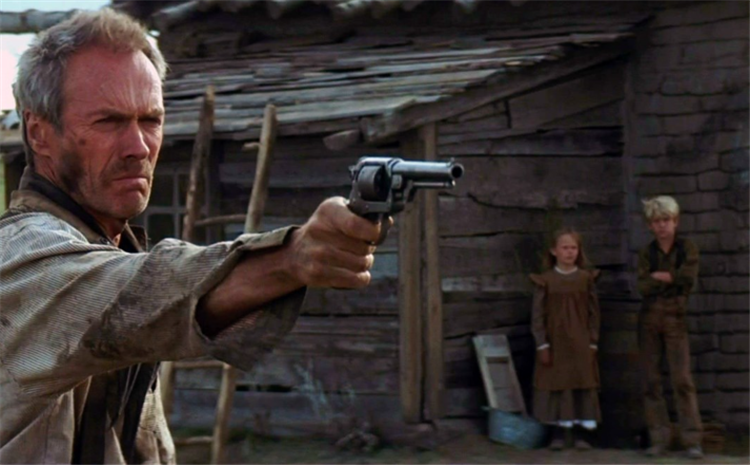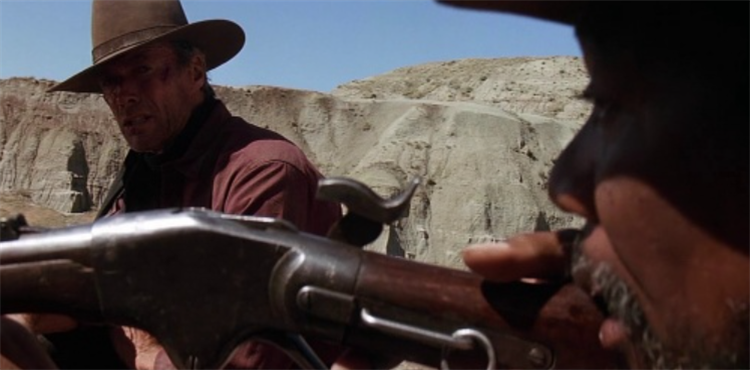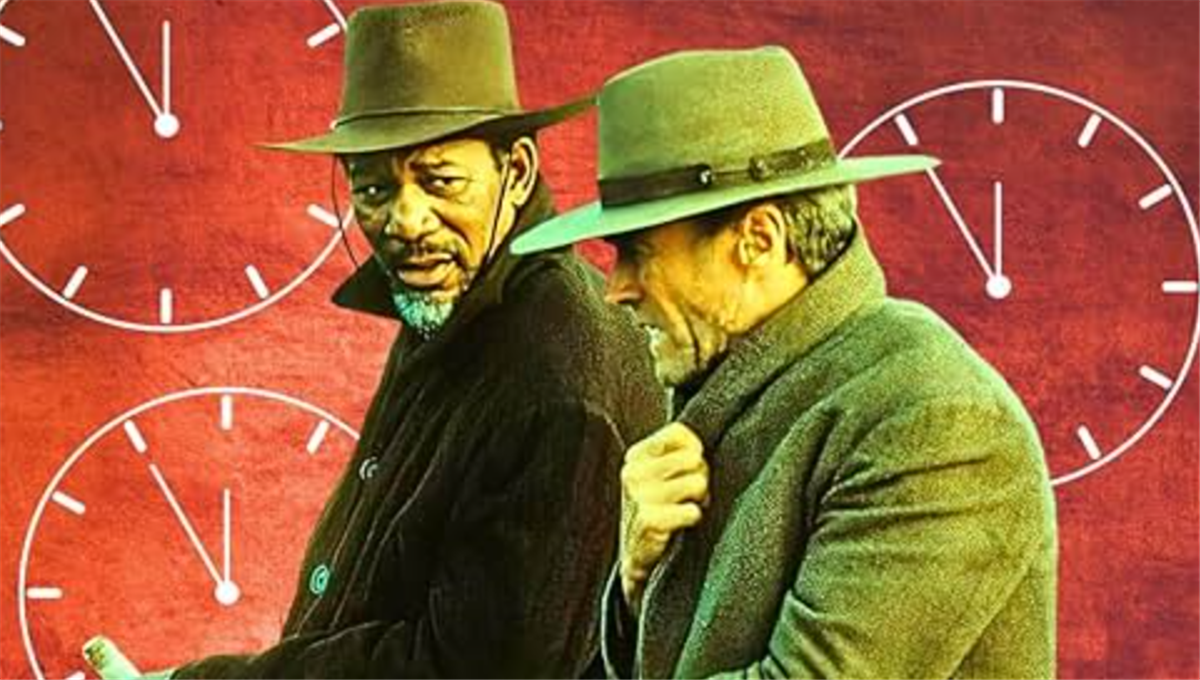Unforgiven, Clint Eastwood’s magnum opus, continues to stand the test of time as one of the finest films in the history of cinema. The picture, which is credited for ending the romanticization of the Western, as well as subverting the genre on its head, had a lot of things going for it. It was more than just a eulogy for the endless men with no name that Eastwood portrayed. It was also one of the most acclaimed projects that the filmmaker ever made, and the story of its production is filled with fascinating tidbits that made the finished product as great as it is.
Clint Eastwood Wanted To Be Older for ‘Unforgiven’
Unforgiven scriptwriter David Webb Peoples, in a Q&A session with the Los Angeles Times, notes that Clint got ahold of the script around 1985, after Francis Ford Coppola failed to get financing for it. Eastwood, however, claims in a speech given to the American Film Institute (AFI), that he first heard of the script in 1981. Initially titled “The Cut-Whore Killings,” or “The William Munny Killings,” both of which Eastwood considered to be horrible titles, the script was hated by people in his team, claiming that it was the worst script they had ever read. The filmmaker, however, took a liking to it. Perhaps his persona as one of, if not the most, iconic faces in the history of Western cinema had something to do with it. Rather than immediately becoming a moving picture, the script lay dormant in this drawer for a long time. One could even make the argument that this made Unforgiven better as a result.
There are several reasons as to why it took about six years before the shooting of the film began. First was Eastwood’s hesitance to immediately go into production. Peoples mentioned in the LA Times Q&A that while Eastwood already had possession of the script’s rights, he would always mention that he was making it “next year.” In an interview with NJ.com, Clint Eastwood mentions that he also wanted to do other things first, claiming that he’d already done a bunch of Westerns. This delay allowed Eastwood to let the idea percolate in his mind, giving him the chance to absorb the heavy grief and emptiness that the character of William Munny needed. Another factor to be considered is that Eastwood was waiting for the opportune time to make it. According to the man himself in the AFI speech, he wanted to become just a little bit older to play Munny perfectly. This is also corroborated by his former romantic partner Frances Fisher, who also co-starred in the film.
Eastwoods recommendation led Reynolds to take on a role he would quickly regret.

In 1990, he remembered that he had the script, and he mustered up the strength to work, thinking that he might get too old if he let another few years pass by. Peoples also claims that his wife was at the Telluride Film Festival that year, and she saw Eastwood’s moment of epiphany. When Clint walked on stage, Eastwood was “overwhelmed by the scenery” and the reception he received, and figured that this was the best year to make his Western. In 1991, Clint and his production team went up to Alberta, Canada and filming started.
How the Production Delays Made ‘Unforgiven’ a Better Film
It is interesting to note that Eastwood himself saw that Munny had to be of a certain age in Unforgiven. One can certainly ascertain that this was an excellent choice on his part, knowing what the film is about. While it isn’t necessary to be old and withered to be full of sins in the real world, the story of the picture necessitates it. In order to make things work, William Munny had to be older. After all, the main theme of the story is redemption, or the failure to attain it, despite one’s best efforts. It was inherent to the essence of the film to have a character aged both by the unmerciful hands of time, and the unforgiving lashes of poverty. That, and the death of one’s life partner, would have taken a toll on anyone. By 1990, Clint Eastwood no longer had the boyish looks of his earlier years. He was now appropriately aged, which was crucial to playing William Munny, the man who had mercilessly killed women and children. A younger Eastwood would have been more energetic, but an older, more seasoned version of himself was tailor-made for the character, and the film as a whole.
Eastwood also had a certain aura and maturity around this time. There is an argument to be made that Clint Eastwood was at his very best entering the 1990s. He had already starred in numerous iconic Westerns by this time, from the Dollars trilogy to a reflexive treatment of his Western persona with High Plains Drifter and Pale Rider. Given that, in hindsight, the subtext of Unforgiven is reliant on the mythos of Eastwood’s Western imagery and characterization through the years, it ultimately aided in elevating the film from a mere cowboy flick into arguably the greatest Western in film history.
The Reception and Legacy of ‘Unforgiven’

Much has been written about the success of Unforgiven, and it has become one of the hallmarks of not only the Western genre, but of cinema as a whole. It debuted at the top position of the box office during its opening weekend, and has continued to be a testament to Clint Eastwood’s brilliance both as an actor and a filmmaker.
The film shows that patience is indeed a virtue, both in its narrative and in its production. Little Bill patiently took his time to systematically dismantle all those who wished to give justice to the victims in Big Whiskey. William Munny waited for the perfect opportunity to strike his bloody vengeance upon those who killed his friend. Clint Eastwood, in his signature style of encouraging art to mirror life, took several years to create and star in his most lauded work, and it turned out to be just what Unforgiven needed.
